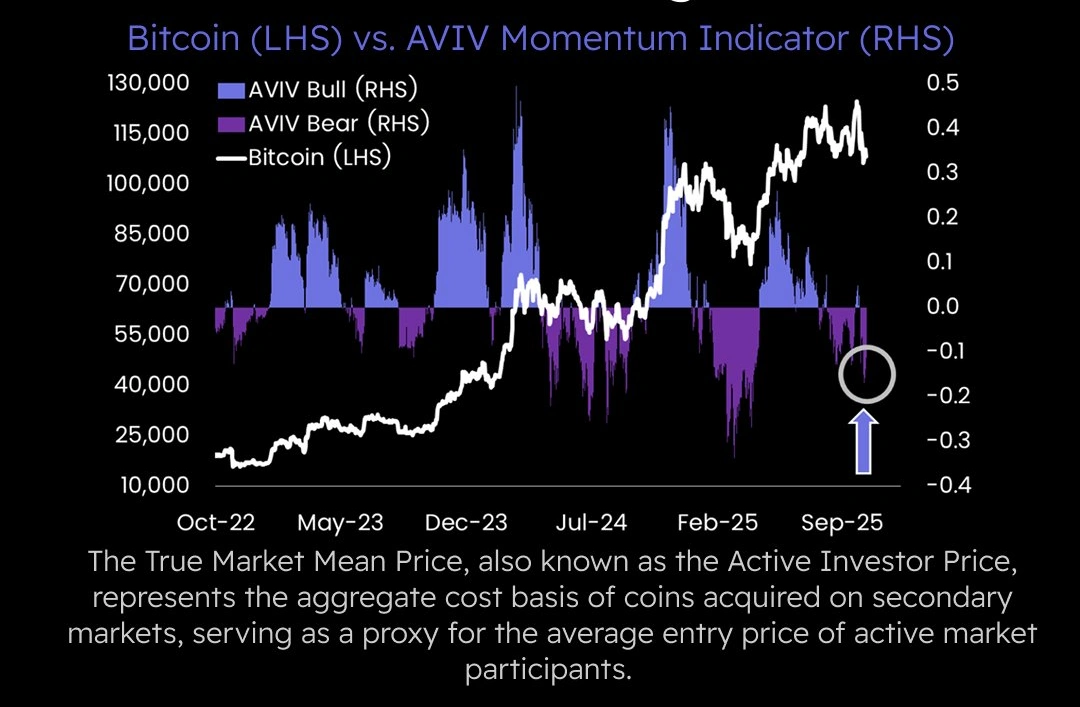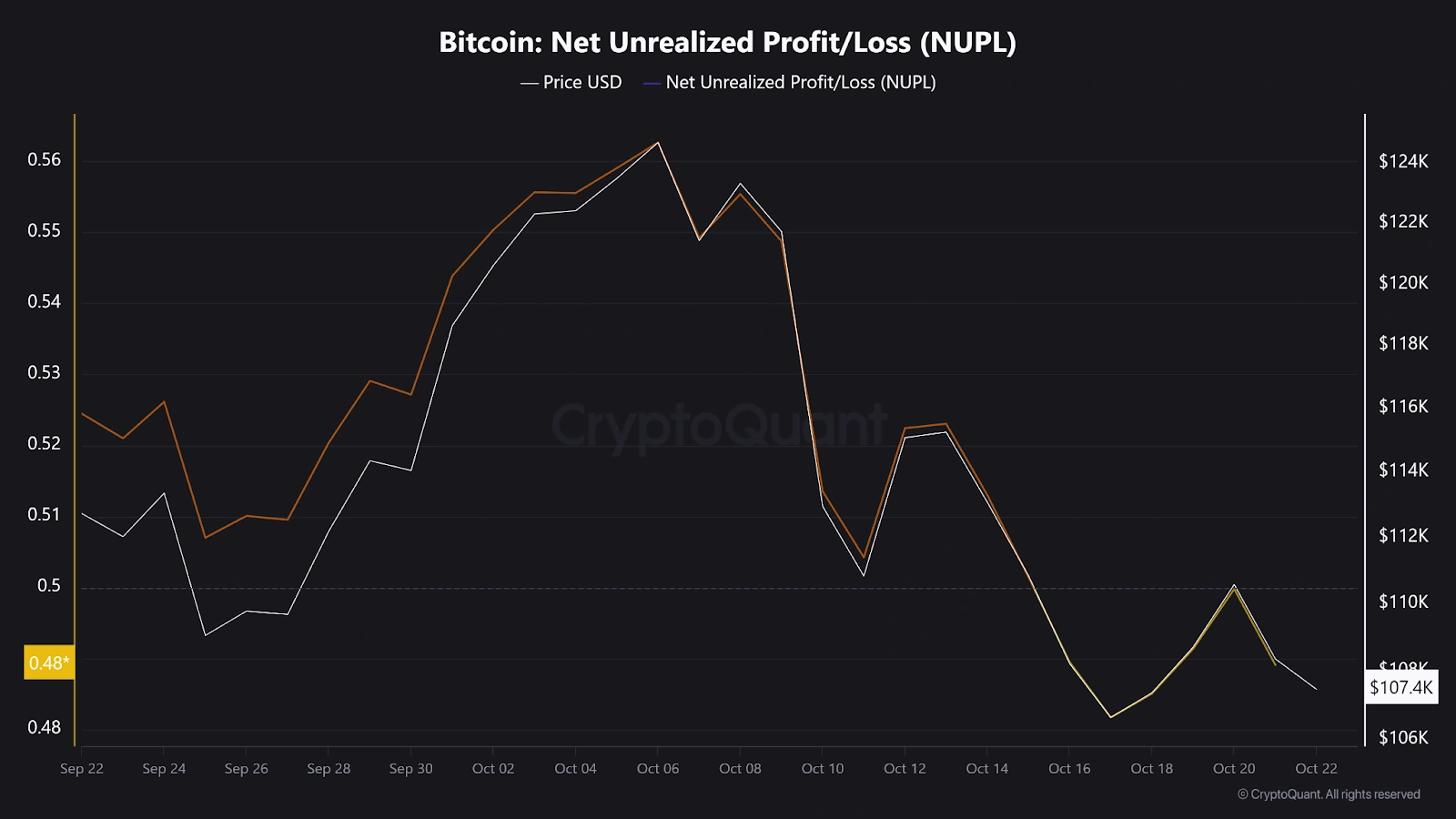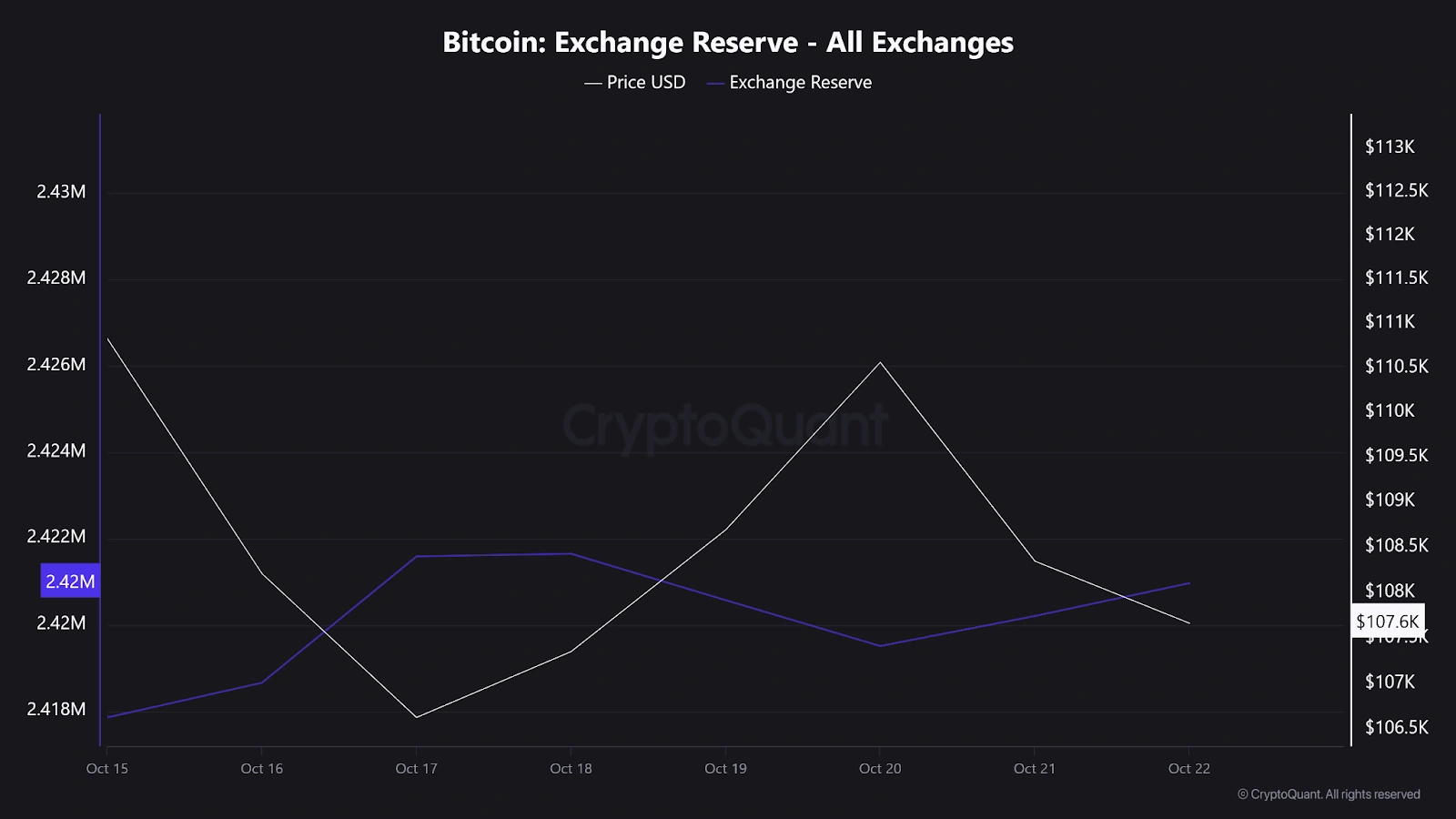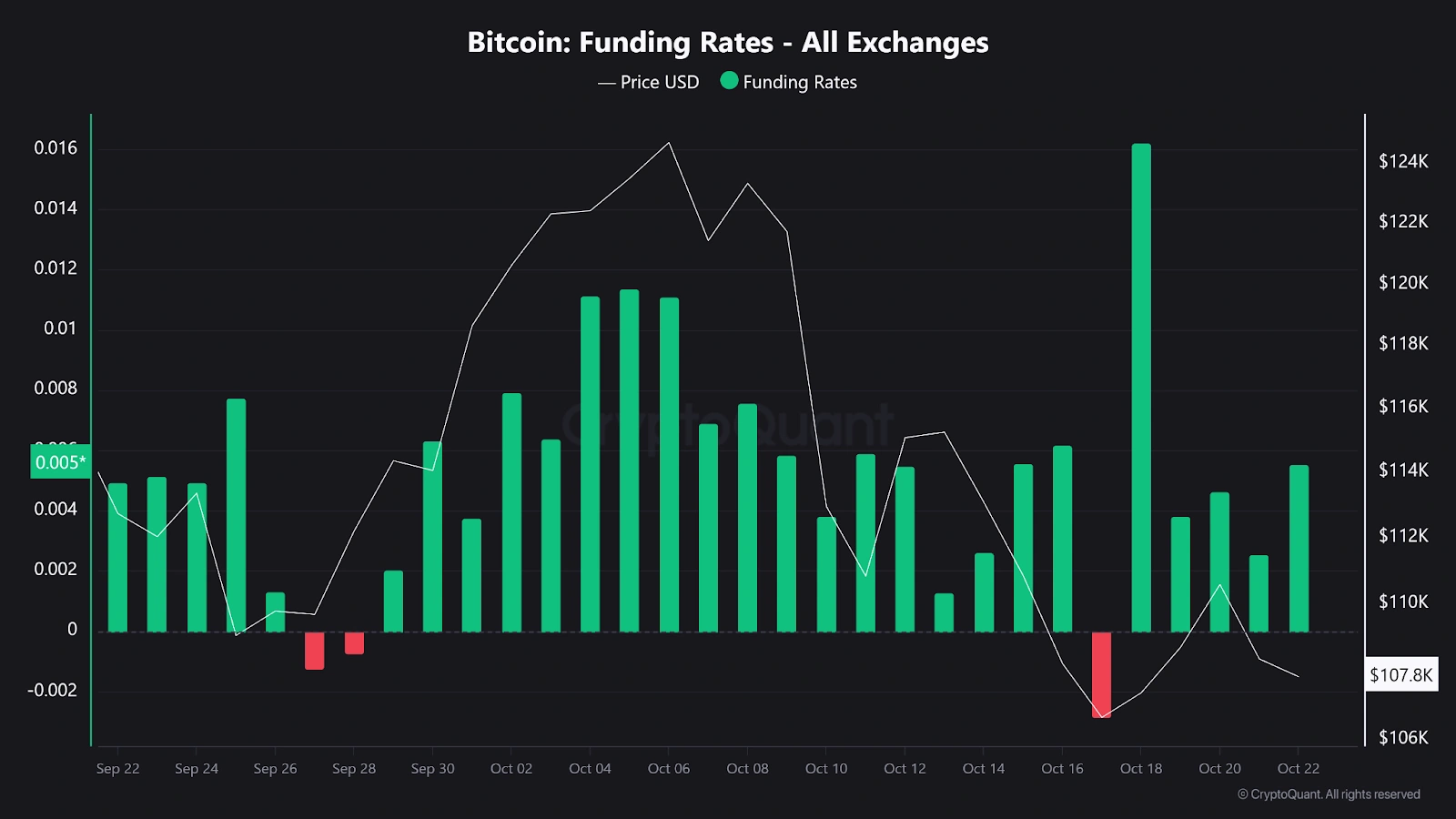Bitcoin market conviction is weakening as profitability margins shrink rapidly, per Matrixport’s analysis. This follows a post-rally slowdown, with net unrealized profits turning negative and exchange reserves rising, hinting at increased selling pressure and a shift toward consolidation.
-
Shrinking market-wide profitability signals fading investor enthusiasm, a pattern seen before major pauses in Bitcoin rallies.
-
Bitcoin’s price has stalled around $107,000 after peaking at $113,000, with declining trading volumes contributing to hesitation.
-
CryptoQuant data reveals negative net unrealized profit/loss ratios and growing exchange reserves, indicating 15-20% higher selling activity in recent weeks.
Explore why Bitcoin market conviction is faltering amid shrinking profits and cooling momentum. Discover key indicators and what they mean for investors in this detailed analysis. Stay informed on crypto trends today.
What is Causing the Slowdown in Bitcoin Market Conviction?
Bitcoin market conviction is experiencing a notable decline due to rapidly shrinking profitability margins across the network, as highlighted by recent data from digital asset firm Matrixport. This trend, which compares current profits against a 90-day momentum model, points to reduced enthusiasm among active traders. Historically, such signals have preceded extended periods of price consolidation rather than continued upward movement.
 BTC markets remain profitable, but profit margins are shrinking fast. Source: Matrixport
BTC markets remain profitable, but profit margins are shrinking fast. Source: MatrixportWhile the overall market stays in profitable territory, the erosion of these gains reflects a broader cooling in sentiment. Investors who entered during earlier lows are now facing thinner margins, prompting caution. Matrixport analyst Markus Thorsen noted in a recent update, “While this indicator remained largely bullish throughout 2023 and early 2024, recent readings indicate that momentum has slowed significantly, suggesting a waning conviction among investors and raising concerns that the market may be entering a more sustained consolidation phase.”
How Has Bitcoin’s Momentum Evolved After the October Surge?
Bitcoin’s performance in what traders call “Uptober” started strong but has since faltered, transitioning from rapid gains to stagnation. After a market dip pushed prices to about $104,000, a quick rebound lifted Bitcoin above $113,000 on October 21. However, sustaining that level proved challenging, with prices retreating to around $107,000 and failing to break decisively past $108,000.
Contributing factors include diminished trading volumes and subdued activity in derivatives markets, which typically amplify rallies. Data from CryptoQuant shows the net unrealized profit/loss (NUPL) metric dipping into negative territory, entering a “profit compression zone” that often correlates with heightened volatility. This zone reflects a balance where holders are neither aggressively buying nor selling, but the overall trend leans toward caution.
 Bitcoin net unrealized profit/loss (NUPL). Source CryptoQuant
Bitcoin net unrealized profit/loss (NUPL). Source CryptoQuantExchange reserves have also ticked upward over the past seven days, a 10-15% increase according to CryptoQuant’s trends, signaling that more Bitcoin is moving toward trading platforms. This influx often precedes selling pressure from long-term holders, further dampening short-term upside potential. Combined with lower realized gains, these elements suggest the rally’s fuel is depleting, potentially extending the current sideways movement.
 Bitcoin exchange reserve. Source CryptoQuant
Bitcoin exchange reserve. Source CryptoQuantThe psychological shift is evident in market behavior, moving from initial disbelief in the recovery to outright hesitation. Funding rates for Bitcoin perpetual futures, tracked by CryptoQuant, have oscillated near zero after brief negative spells, now edging back into mildly negative territory. This indicates a market that’s balanced but leaning bearish, with short-position holders exerting subtle pressure.
 Bitcoin funding rate across exchanges. Source: CryptoQuant
Bitcoin funding rate across exchanges. Source: CryptoQuantShort-term output profit ratios sit at 1.0, meaning recent buyers are offloading at breakeven or minimal gains, a far cry from the aggressive profit-taking seen in hotter phases. The early October volatility, which liquidated billions in leveraged positions during a flash correction, has left traders wary. Experts from CryptoQuant emphasize that while Bitcoin’s long-term bullish structure holds, short-term sentiment has pivoted, with consolidation likely to persist for weeks based on past cycles.
Average investor positions remain profitable, but the narrowing gap between cost bases and spot prices underscores eroding confidence. If this persists, it could test lower support levels around $105,000, though historical data from similar setups shows Bitcoin often uses these pauses to build strength for future advances.
Frequently Asked Questions
What Does Shrinking Profitability Mean for Bitcoin’s Price Outlook?
Shrinking profitability in Bitcoin indicates reduced investor conviction, often leading to price consolidation rather than sharp declines. Matrixport’s 90-day model shows this as a precursor to pauses, with data suggesting a 20-30% drop in momentum metrics. Investors should monitor exchange flows for signs of stabilization, as historical patterns point to eventual recovery after such phases.
Is the Current Bitcoin Hesitation a Sign of an Impending Correction?
The shift from disbelief to hesitation in Bitcoin markets reflects cautious trading, with funding rates near zero and rising exchange reserves adding to volatility. This setup, per CryptoQuant insights, typically signals a temporary cooldown rather than a full correction, allowing the asset to reset before potential upward moves. Voice search users note that monitoring NUPL trends can provide early warnings for directional shifts.
Key Takeaways
- Profit Margins Are Contracting: Matrixport data reveals Bitcoin’s market-wide profitability shrinking, eroding the rally’s foundation and prompting investor caution.
- Exchange Activity Signals Pressure: CryptoQuant reports a 10-15% rise in reserves, indicating increased selling potential and heightened short-term volatility.
- Consolidation Likely Ahead: Historical trends suggest this hesitation phase could last weeks, offering a strategic entry point for patient holders watching key support levels.
Conclusion
In summary, the waning Bitcoin market conviction driven by shrinking profitability and cooling momentum underscores a market in transition. Data from Matrixport and CryptoQuant highlight the risks of prolonged consolidation, yet the long-term structure remains resilient. As investors navigate this phase, staying attuned to funding rates and reserve trends will be crucial for informed decisions, with opportunities likely emerging from this reset.





